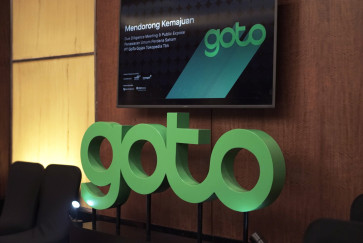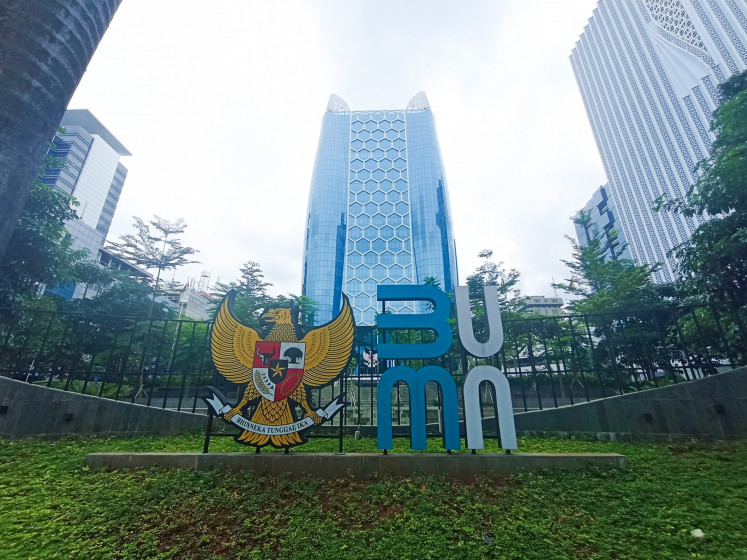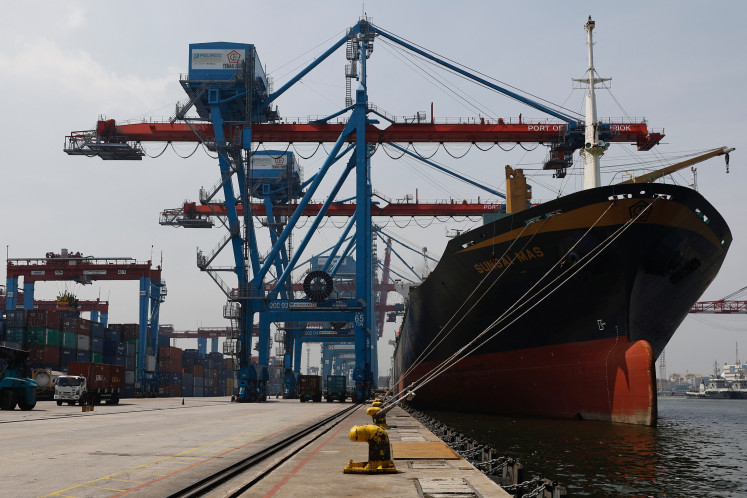Govt upbeat exports will bounce back in second half
(Antara/Andreas Fitri Atmoko) Despite weak overseas demand for Indonesian commodities and manufactured goods in the first five months of the year, the government is upbeat that this year’s export target can be achieved
Change text size
Gift Premium Articles
to Anyone

(Antara/Andreas Fitri Atmoko)
Despite weak overseas demand for Indonesian commodities and manufactured goods in the first five months of the year, the government is upbeat that this year’s export target can be achieved.
Deputy Trade Minister Bayu Krisnamurthi said in Jakarta on Tuesday that the ministry was predicting higher export growth in the second half due to surging prices for several key export commodities and products, such as palm oil, vehicles, automotive components, electronics and footwear.
“Exports depend heavily on global economic growth, which has been highly affected by conditions in the eurozone. However, considering that our main export commodities are growing positively, this optimism makes sense,” Bayu said.
According to a trade report released by the Central Statistics Agency (BPS) on Monday, the nation’s exports have been under heavy pressure due to weaker overseas demand.
Imports, however grew, resulting in a US$1.13 billion deficit in the nation’s balance of trade over April and May.
During the first five months of the year, the nation exported $8.81 billion in palm oil, up 8.93 percent from the same period last year.
Meanwhile exports of vehicles and components totalled $1.92 billion, up 51.95 percent, and exports of machines and mechanical equipment totaled $2.52 billion, up by 22.3 percent.
In the January-to-May period, the nation’s total exports grew 1.48 percent to $81.42 billion, with non-oil and gas exports up 0.04 percent to $64.26 billion.
Unlike the slow upward movement in exports, imports climbed by 16.09 percent to $79.90 billion, with non-oil and gas imports rising 17.39 percent to $61.65 billion.
Bayu said that the nation might meet its export target of $203 billion for 2012, a target unchanged from 2011, while maintaining a $5 billion trade surplus — all driven by positive growth in commodities and merchandise.
The government earlier predicted that the nation’s trade surplus for 2012 would slide to one-fifth of last year’s $26.06 billion.
The trade surplus in the first five months of the year was $1.52 billion, down from $11.72 billion in the same period last year.
Analysts have said that high import growth, which undermines trade surpluses, stemmed from the weak structure of domestic manufacturers that have largely relied on imported raw materials, imported intermediary materials and imported capital goods.
Imports of raw materials and intermediary goods accounted for 73.05 percent of the nation’s imports in the January-to-May period this year, accounting for $79.9 billion, while capital goods represented 19.96 percent of total imports.
Ahmad Erani Yustika, an economist with the Institute for Development of Economics and Finance (INDEF), said that there was a fallacy in the development of the domestic manufacturing industry.
The government, according to Ahmad, tended to focus on traditional key sectors and other sectors with a large reliance on imported raw materials and intermediary goods.
Erani said that the government should take the lead in determining the course of the nation’ industrial development over the long term, instead of giving way to investors, as has been seen at present.
“The government should take necessary measures to diversify export products and to improve the trade structure by fostering manufacturing sectors that depend more on locally-sourced materials,” he said.









